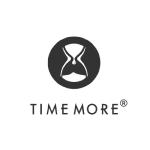Why User Stories Shape Smarter Test Decisions
In the fast-moving world of software development, testing isn’t just about checking boxes—it’s about understanding the human behind the code. At the core of smarter test decisions lies the powerful use of user stories, which transform abstract requirements into lived user experiences. By grounding test strategies in real-world narratives, teams reduce guesswork, anticipate risks, and align quality with actual user value.User stories act as bridges between technical execution and human intent, ensuring tests reflect more than just specifications—they reflect real outcomes.
Beyond Empathy: How User Stories Refine Test Context
User stories begin with a simple question: “As a [user role], I want [goal], so that [reason].” This structure moves testing beyond technical logic into empathetic context. When testers analyze these narratives, they gain clarity on how features will be used, not just how they are built. For example, a story describing a checkout flow with multiple payment options guides testers to simulate real purchase journeys, including failure scenarios like payment declines or timeouts. This contextual grounding sharpens test coverage and reduces false confidence in automated checks.
Mapping Intent to Usage Scenarios
Each user story carries implicit behavioral cues. A story like “As a frequent traveler, I want to save itineraries locally” signals offline access needs and performance under low connectivity. Testers translate this into scenarios where network conditions are throttled, ensuring the app remains usable and responsive. Such alignment ensures tests evolve from static checklists to dynamic, context-rich validation.
Aligning Coverage with User Behaviors
Test coverage often suffers from overemphasis on technical paths or underrepresentation of edge cases. User stories expose these gaps by revealing user motivations and dependencies. For instance, a story emphasizing “cross-device synchronization” highlights the need for tests across multiple platforms and sync conflict handling. This behavioral lens ensures coverage reflects real usage patterns, not just engineered ones.
Reducing Ambiguity Through Lived Narratives
Ambiguity is the enemy of effective testing. User stories cut through vagueness by embedding intent in specific, relatable situations. A story stating “As a new user, I want a guided onboarding” prompts testers to simulate first-time workflows, including tooltips, progress indicators, and error recovery paths. This narrative clarity eliminates assumptions and supports precise, actionable test cases.
“Testing without stories is like navigating a house without a floor plan—you might find the door, but often miss the spaces that matter most.”
From Empathy to Execution: The Role of User Stories in Test Prioritization
With clear user stories, teams shift from arbitrary prioritization to value-driven testing. Acceptance criteria become testable gates—criteria like “successful checkout within 3 clicks” or “error message clarity rated 4/5.” Mapping these criteria to story dependencies reveals high-risk paths early, enabling teams to allocate resources where impact is greatest. Story dependency mapping surfaces cascading risks, such as a payment flow relying on user profile data, ensuring critical paths are validated first.
Prioritizing Based on Acceptance Criteria
- Test critical paths defined in story acceptance criteria.
- Map high-risk dependencies to prioritize test depth.
- Align automation scope with recurring user value.
Identifying High-Risk Areas Through Dependencies
User stories expose hidden risks when dependencies are mapped visually. For example, a booking story dependent on external API availability signals a risk point—delays or outages here stall the entire process. Testers proactively design recovery scenarios, ensuring resilience is validated, not assumed. This risk-informed approach transforms reactive testing into proactive quality assurance.
Enabling Targeted Test Automation Aligned to User Value
Automation thrives when aligned to meaningful outcomes. By tying test scripts to user story goals—like “ensure profile data persists across sessions”—teams avoid automating trivial or irrelevant cases. This focus increases automation ROI, ensuring every automated test delivers value by verifying what users truly depend on.
“Automation without purpose is noise—test stories turn data into decisions that matter.
Unlocking Implicit Requirements: Capturing Unspoken User Needs in Testing
User stories often contain unstated expectations—assumptions users hold but don’t articulate. These hidden needs become critical quality signals. For instance, a story describing “secure login” may imply expectations for session timeouts, multi-factor backup, or password recovery ease. Testers decode these through narrative context, building tests that anticipate edge cases and unspoken pain points.
Extracting Non-Functional Requirements
Embedded in story descriptions are often non-functional needs: performance under load, security during data entry, or accessibility across devices. A story about “real-time collaboration” signals expectations for low latency and conflict resolution. Testers translate these into stress tests, security scans, and accessibility audits, ensuring quality extends beyond functionality.
Anticipating Edge Cases Through Narrative Intent
Users rarely describe extreme scenarios, but stories invite exploration. A “save progress” feature might prompt testers to simulate interrupted saves, corrupted files, or simultaneous edits. By interpreting intent, testers expand coverage beyond standard paths, strengthening robustness against rare but impactful failures.
Enhancing Test Robustness by Addressing Unstated Expectations
Robust testing goes beyond passing checks—it anticipates how users break things. A story emphasizing “intuitive navigation” leads testers to validate menu hierarchies, keyboard shortcuts, and visual feedback. Addressing these unstated needs ensures the system remains resilient under real-world misuse, not just ideal use.
“The best tests don’t just confirm behavior—they prevent the kinds of failures users never ask about but never forgive.”
Bridging Developer Insight and Tester Perspective via User Stories
User stories act as a shared language between product teams and testers, dissolving silos. When developers understand stories as lived experiences, they write more intuitive code. Testers, armed with narrative clarity, craft precise validation that reflects real value. This alignment ensures acceptance thresholds—defining “done”—are mutually agreed and empirically verified.
Facilitating Shared Understanding
Product owners articulate vision; testers interpret feasibility. User stories bridge this gap by grounding abstraction in concrete scenarios. A story like “As a support agent, I want instant ticket history” guides testers to validate data integration depth, response times, and error handling—not just presence of a ticket feed.
Using Stories to Clarify Acceptance Thresholds
Acceptance criteria often remain vague. User stories transform ambiguity into clarity by defining success conditions. For “As a user, I want fast search results,” testers determine what “fast” means—response under 1 second, relevance of returned items, or caching behavior—ensuring validation aligns with real expectations.
Strengthening Traceability from User Need to Test Verification
End-to-end traceability ensures every test links back to user value. User stories anchor this chain: from initial intent to detailed criteria, then to automated or manual test steps. This traceability enables auditability, faster defect root cause analysis, and clearer impact assessments when requirements evolve.
“Traceability isn’t just a checkbox—it’s the thread that keeps testing human-centered, even as systems scale.”


















